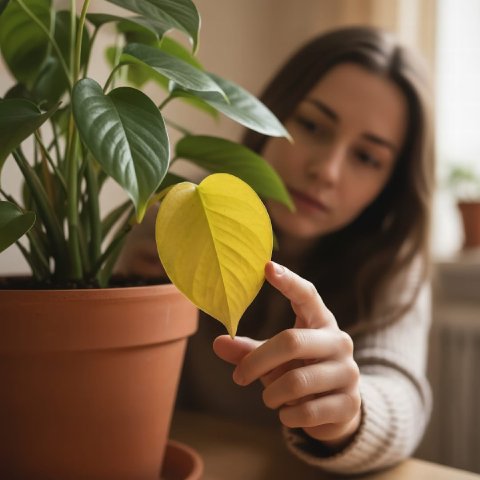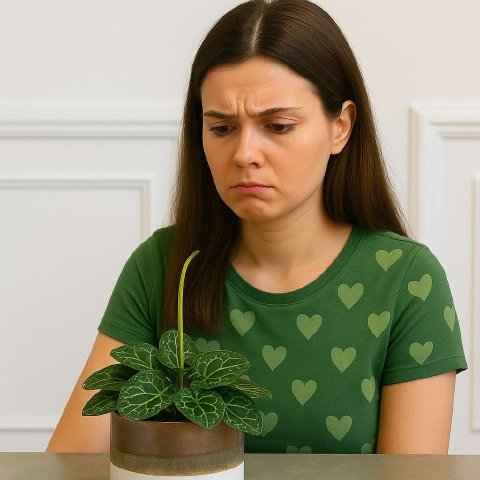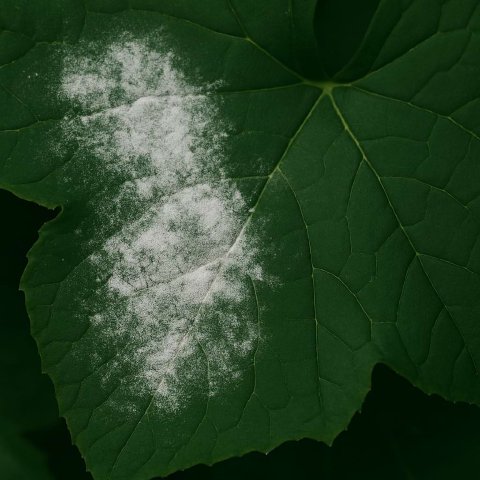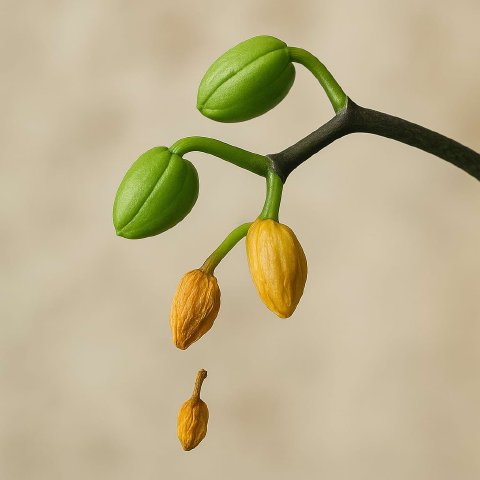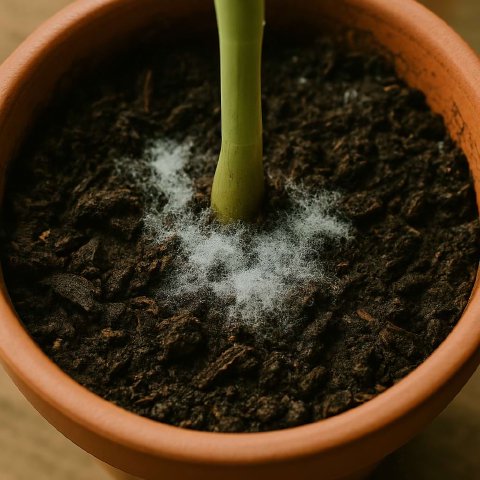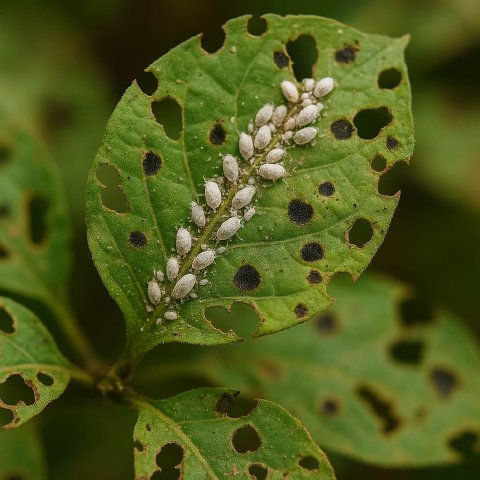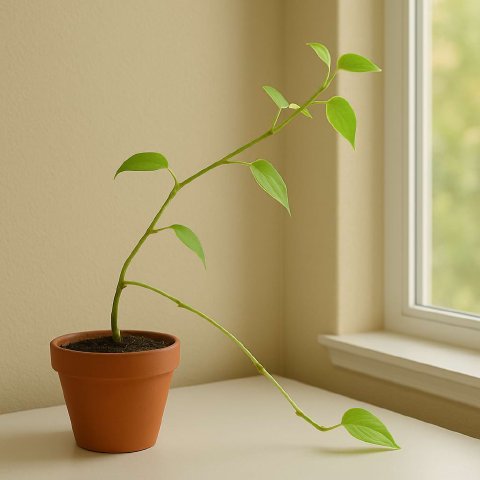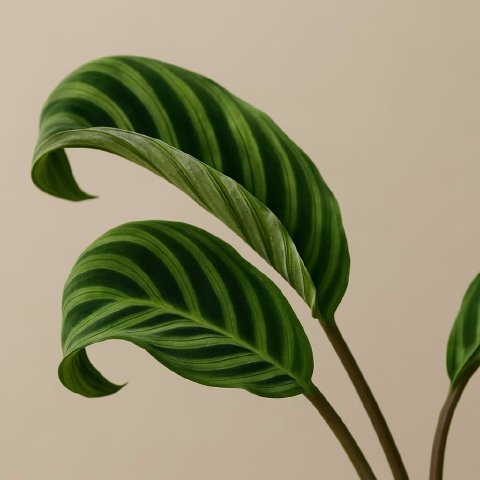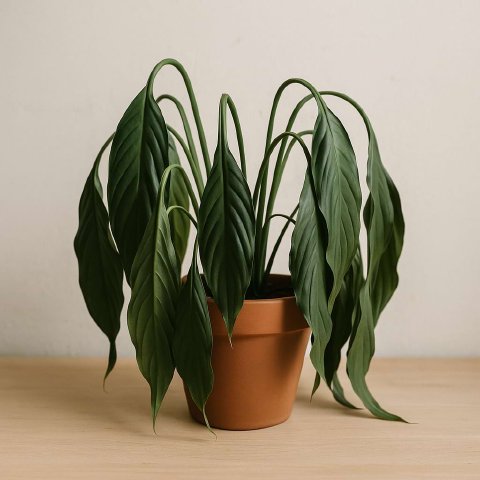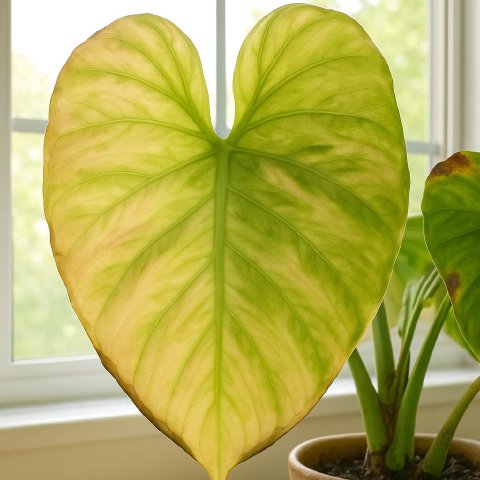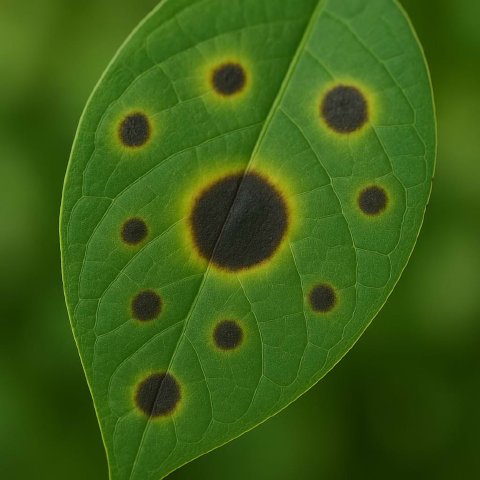🪴 In This Guide 🪴
🎯 Brown, Crispy Tips? Let's Diagnose the Problem
Quick Diagnostic Chart
Hello, plant friends! Anastasia here. Seeing those brown, crispy edges appear on your beautiful green leaves can be frustrating, but it’s a very common signal from your plant. It’s telling you there’s an imbalance in its environment.
This problem, known as “leaf scorch” or “tip burn,” almost always relates to a water issue-either in the soil or in the air. Let’s figure out exactly what your plant is trying to say.
| If you see… | And the soil is… | It’s likely… |
|---|---|---|
| Brown, crispy tips AND yellowing lower leaves | Bone Dry / Hard | Underwatering |
| Just brown, crispy tips (especially on tropicals) | Consistently moist | Low Humidity (The #1 Culprit for Tips!) |
| Brown tips with a distinct yellow “halo” around them | N/A | Water Quality Issues (Tap Water Minerals) |
| Brown tips, plus pale or scorched-looking leaves | N/A | Too Much Direct Sun |
| Brown tips on a recently fertilized plant | N/A | Fertilizer Burn |
🤔 Why Do Leaf Tips Turn Brown?
The Science of Tip Burn
A plant’s vascular system, like our own circulatory system, moves water from the roots all the way to the furthest edges of its leaves. The very tip of the leaf is the last point to receive water.
When there’s a problem-not enough water available, the air is too dry and pulling moisture out too fast, or the water is full of minerals clogging the system-the tips are the first part to suffer. The plant can’t supply them with enough water to keep the tissue alive, so it dries up, dies, and turns brown and crispy.
🌿 Top 5 Causes of Brown, Crispy Tips and How to Fix Them
Cause #1: Low Humidity
This is the most common reason for brown tips on tropical houseplants.
- Why it happens: Most of our favorite houseplants (like Calatheas, Ferns, and Palms) come from humid, tropical rainforests. The air in our homes, especially with heating or air conditioning, is often far too dry. This dry air pulls moisture from the leaves faster than the roots can replace it, causing the delicate tips to dry out.
- How to check: Your home’s humidity is likely below the 40-60% range that most tropical plants prefer. You’ll often see this problem get worse in the winter when the heat is on.
- The Fix: Increase the ambient humidity around your plant. The most effective ways are to use an electric humidifier, group several plants together to create a humid microclimate, or place the plant on a pebble tray filled with water (ensure the pot sits on the pebbles, not in the water).
Cause #2: Underwatering
If the whole plant is dehydrated, the tips will be the first to show it.
- Why it happens: When the soil becomes too dry, there simply isn’t enough water for the roots to send up to the leaves. The plant prioritizes keeping its core alive, sacrificing the extremities like leaf tips and older leaves.
- How to check: The soil will be dry to the touch and may be pulling away from the sides of the pot. The pot will feel light, and you’ll likely see other signs like drooping or wilting leaves.
- The Fix: Give the plant a deep, thorough soak. Bottom watering is an excellent way to ensure the entire root ball is rehydrated. Place the pot in a few inches of water and let it absorb water for 30-60 minutes. Then, commit to a more consistent watering schedule.
Cause #3: Water Quality Issues
What’s in your water matters, especially for sensitive plants.
- Why it happens: Tap water often contains minerals like fluoride, chlorine, and salts. These minerals can accumulate in the soil and build up in the leaf tips over time, eventually reaching toxic levels and killing the tissue.
- How to check: This is a common issue for sensitive plants like Calathea, Dracaena, and Spider Plants. The brown tip will often have a distinct yellow “halo” or line separating it from the healthy green tissue.
- The Fix: Switch your water source. Use distilled water, filtered water, or rainwater for your sensitive plants. You can also let tap water sit out for 24 hours to allow some of the chlorine to evaporate, though this won’t remove minerals or fluoride.
Cause #4: Too Much Direct Sun
Sunburn on a plant often shows up as crispy brown patches and tips.
- Why it happens: Intense, direct sunlight can literally scorch the leaves, especially for plants that prefer indirect light. The leaves heat up and lose water too quickly, causing the cells to die.
- How to check: Are the brown tips and spots appearing mainly on the leaves getting the most direct sun? Do the leaves also look faded or bleached?
- The Fix: Research your plant’s light needs and move it to a location where it receives the appropriate amount. For most tropicals, a spot a few feet back from a sunny window or behind a sheer curtain is ideal.
Cause #5: Fertilizer Burn
Too much of a good thing can be a bad thing.
- Why it happens: Over-fertilizing can lead to a buildup of mineral salts in the soil, which “burns” the plant’s roots. Damaged roots can’t absorb water properly, leading to-you guessed it-brown, crispy tips.
- How to check: This often appears a week or two after you’ve fertilized, especially if you used a full-strength dose or fertilized a very dry plant.
- The Fix: “Flush” the soil to remove excess fertilizer salts. Take the plant to a sink or shower and let a slow, steady stream of lukewarm water run through the soil and out the drainage holes for several minutes. Hold off on fertilizing for at least a month or two, and when you resume, always dilute to half-strength.
🛡️ How to Prevent Brown Tips in the Future
Best Practices for Healthy Leaves
- Prioritize Humidity: For tropical plants, a small humidifier is one of the best investments you can make.
- Water Consistently: Don’t let your plants go from bone-dry to waterlogged. Check the soil regularly and water when the top layer is dry.
- Use Quality Water: If you have sensitive plants or hard tap water, switching to filtered or distilled water can make a huge difference.
- Fertilize Wisely: Follow the “less is more” rule. Fertilize only during the growing season and always dilute the mixture. Never fertilize a dry or stressed plant.

